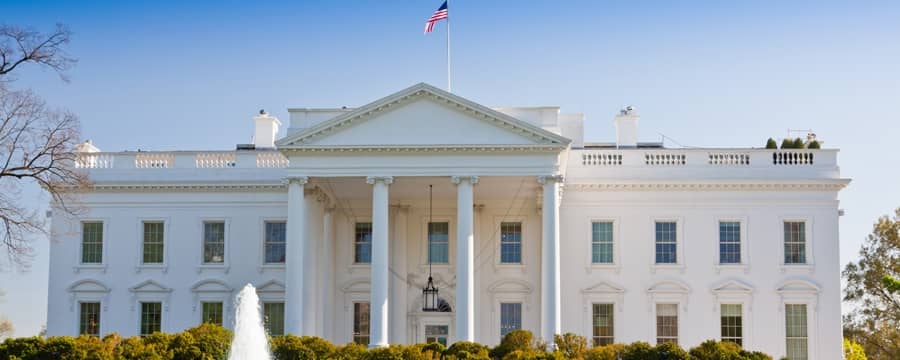
Where will infrastructure spending and taxes land?
Since the start of the election campaign, President Biden has consistently supported a significant spending increase to upgrade the nation’s infrastructure, along with certain adjustments to both the corporate and individual tax codes to help pay for it. With negotiations on these proposals currently underway in Washington, investors are watching carefully for what changes to the tax code may ultimately result.
Just three weeks after Congress passed the $1.9 trillion pandemic relief package in early March this year, the White House released its $2.3 trillion infrastructure spending bill. Known as the American Jobs Plan, the eight-year spending proposal covers a wide range of programs and, in some cases, expands the traditional definition of infrastructure. It also includes tax provisions.
In response, Senate Republicans proposed an initial five-year $568 billion spending package, targeted at traditional infrastructure. House Republicans proposed their own $400 billion bill.
Negotiations are currently underway in an effort to find common ground on where to target infrastructure spending, and how to pay for it. Some progress has been made, and the gap between the parties has narrowed. For example, President Biden lowered his spending proposal to $1.7 trillion by moving the cost of research, development and manufacturing support to separate legislation, and Senate Republicans revised upward their proposal to $930 billion.
U.S. infrastructure needs
There is general agreement that the nation’s infrastructure is in need of repair. In its quadrennial assessment of U.S. infrastructure conditions, the American Society of Civil Engineers assigned a grade of C-, which it defines as “mediocre, requires attention.” Although that’s nothing to be proud of, it’s the first time in 20 years the score was not in the D range because of needed bridge improvements. The ASCE estimates $2.6 trillion is required over the next 10 years to improve infrastructure to a B level, or “good, adequate for now.”
The negotiations in Washington revolve around the cost and focus of potential legislation, rather than on the underlying need for it (there is little disagreement there). The two sides are not significantly far apart in terms of proposed spending on roads, bridges, transit, airports, waterways and ports.
There are major differences, however, around proposed spending for water, wastewater, broadband, electric power and schools. In addition, much of the president’s proposal includes significant spending on non-traditional infrastructure categories such as support for home-care workers and retrofits for more energy-efficient homes and commercial buildings. Republicans have insisted that the focus be on traditional core infrastructure categories.
There is also disagreement about how to pay for the provisions.
- Republican leadership have said they are not open to revisiting the 2017 tax overhaul (Tax Cuts and Jobs Act), which lowered the statutory corporate tax rate to 21% from 35%. The president would like to increase it to 28%, although a hike to 25% may be more likely.
- Democrats have rejected proposals to charge user fees, such as tolls and vehicle mileage fees, or to raise the federal gas tax.
- There is some bipartisan interest to generate revenue through enhanced tax enforcement.
Potential paths forward
While swift bipartisan agreement for an infrastructure bill is an option, few give this outcome much chance of success. The sides are too far apart.
Another option is for the Democrats to go it alone — through the budget reconciliation process — either with a single infrastructure bill or in combination with social provisions in President Biden’s $1.8 trillion American Family Plan.
The reconciliation process would also increase the likelihood that some or all of the president’s proposed changes to individual tax and corporate tax codes could be signed into law. However, that would require support from all 50 Senate Democrats.
Progressive Democrats have indicated a preference for a combined package. This stems from concerns that a stand-alone infrastructure bill could prevent passage of the American Family Plan for social programs.
Moderates, on the other hand are concerned the sheer cost of a combined bill would hinder its passage, raising the possibility of agreement on a smaller combined bill.
House Speaker Nancy Pelosi has said she would like the House to pass infrastructure legislation by July 4. The Senate is targeting passage by the August recess. Nevertheless, the final outcome for both the American Jobs Plan and the American Family Plan could easily extend into the fall.
The president has said that while he is open to negotiation, he will not accept inaction. If the two sides remain unable to bridge their differences, he will soon have to decide how best to proceed. And Transportation Secretary Pete Buttigieg has indicated that time for negotiation is running short.
| Zahra Marchand |
| Financial Advisor Ameriprise Financial Services, LLC. |
| 2029 Century Park E Ste 2550 Los Angeles, California 90067-2936 |
| Office Phone: 424.343.5136 Email: zahra.marchand@ampf.com Website: www.ameripriseadvisors.com/ |
